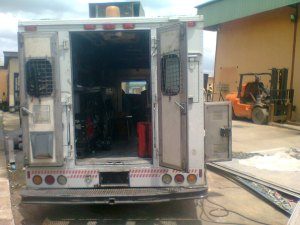IS THERE MOISTURE IN YOUR BRAKE FLUID?
The presence of moisture or water, is one of the causes of an ineffective brake application.
This occurs when the brake fluid is exposed to environmental air, which reacts with the chemistry of the fluid, thereby making brake application worthless.
Brake fluids just like any other fluids in a car’s system, essentially helps to cool critical components, prevents corrosion, and helps to transmit some forms of efforts where its required.
WHAT ARE THE SIGNS OF MOISTURE PRESENT
Brake applications are always not effective in the sense that the brakes go all down to the floor, where you got to pump the brakes twice or thrice, to bring a car to a halt.
The brakes has a spongy kind of feelings, when you apply the brakes.
Opening the brake fluid reservoir, the colour of the brake fluids in there has a blackish colouration.
Brake fluid reservoir emptied of its contents. Notice the black colouration
DANGERS OF CONTAMINATED BRAKE FLUIDS
Could lead to safety concerns, especially an accident, if not properly addressed immediately.
This has led to several deaths, which could have being avoided in the first place.
2. Corrosion of vital brake system parts, such as caliper pistons, ABS module dysfunctions, corrosion of brake piping that leads to brake fluid leaks, and finally,
3. Brake fluids could spilled over to body paints, as a result of overfilled reservoir levels.
The more moisture in a brake fluid, the more the volumes of fluids in the reservoir.
An overfilled brake fluid reservoir
HOW TO PREVENT MOISTURE
Since the operation of a braking system requires the system to be in a closed loop, it is pertinent to ensured that moisture is removed or reduced from getting access to the brake fluid.
Use always the recommended brake fluid for your car. Some car manufacturers specify using DOT 3/DOT4 fluids only, and nothing else.
Do not leave the brake fluid reservoir opened for a long time. Immediately close reservoir, after every openings.
If the cover does not provide the necessary sealing of the reservoir, it is best to replaced it.
Replace a failed brake salvo mechanism piston with an OEM one.
Properly bleed the brake system of air, during brake jobs, and properly tightened bleeder valves using correct torque value.






This helps get air out of the system.

Carrying out a brake system flush, would go along way in curtailing some of these problems.





